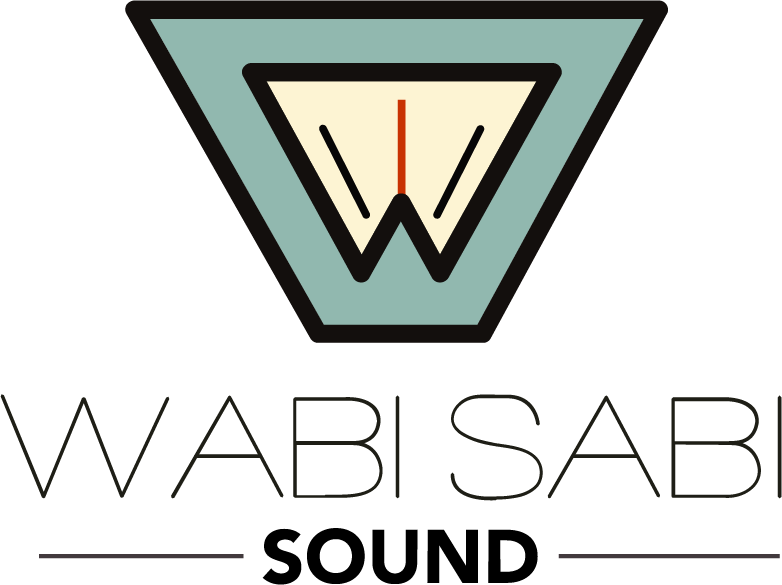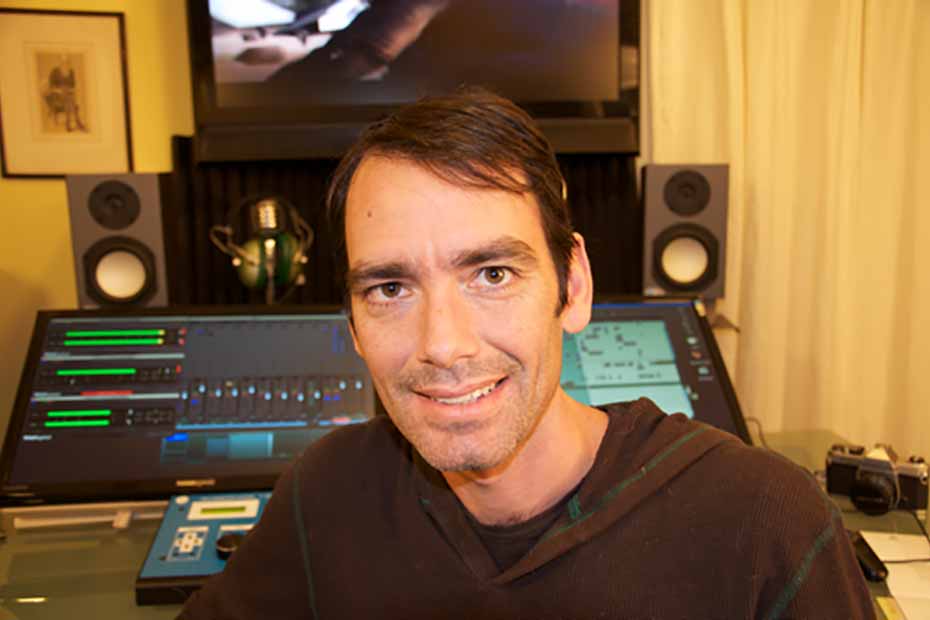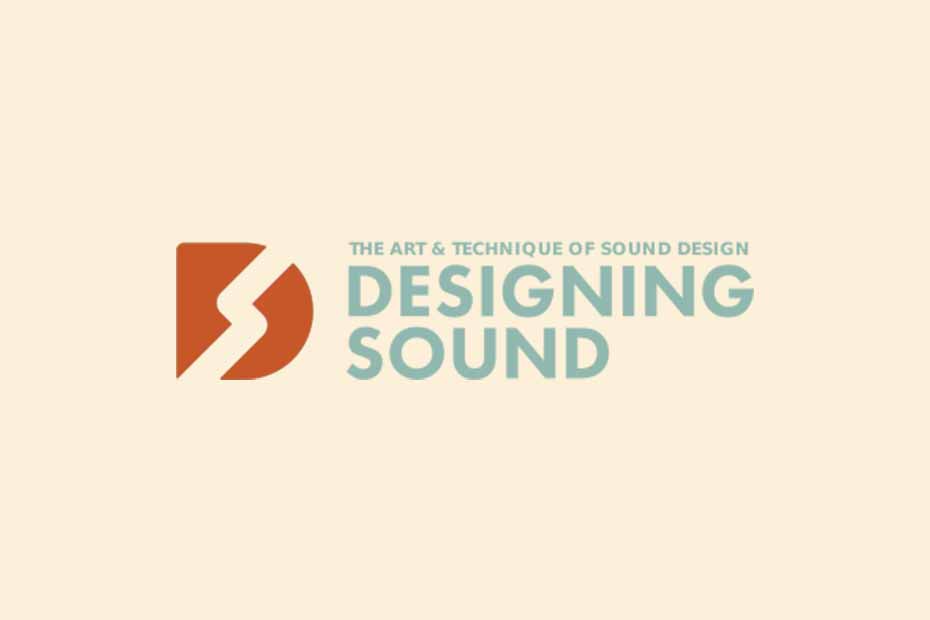SHARE THIS
Andrew Lackey Special: Q&A From the Readers
by Miguel Isaza, December 31, 2009
Here are the answers to the questions that some of you made to Andrew Lackey.
Designing Sound Reader: I have technical question regarding monitor placement and stereo imaging. In most studios (like my own) the monitors are some distance to the left and right of my two computer monitors, where most of the time on the right one the movie is displayed.
Andrew Lackey: When I have a scene of somebody walking from left to right, I tend to pan the footsteps from hard left to hard right. But to my ears, somebody is walking from the left of my studio to the right, outside the screen borders.
How do you deal with this problem? If it’s for television, do you mix as if the speakers are right next to the screen? And do I need additional speakers right next to one computer screen to check the stereo image?
It is definitely important to have a screen in the center dedicated to video. Most studios have two monitors for the DAW and one in the center for a video. I usually elevate my video display by hanging it on the wall and placing the center channel underneath it…but above my computer monitors. As far as left and right…most people have the speakers set up on the outside of their tv. I actually like this because it means as a designer I have a little more room in the stereo field (off the side of the screen). So, I guess what I’m saying is that I don’t see “panning off the screen” as a big problem. If something is actually going off the screen in the video….seems reasonable to go the extra distance you have with the panner to reflect that. So, first off get your speakers set up in the optimum place…then get a feel for how the panner spread reflects the actual width of the screen and where off the screen starts. Then check your mix on another system that seems like a good non-studio target system. I use my home theater for that.
DSR: Hey Andrew… What could be the best way to study sound design online?
AL: As with anything you have to balance theory with practice. No site or class or book is going to teach you everything, but there are tons of great resources. Designing Sound is a great one. You’re path is unique and these bits of information only help you in so far as you are practicing. Find a project, research good techniques, have fun with it and repeat.
DSR: Hello Andrew. First… thanks for this amazing special, the articles are terriffic! I want to know what are some of the mics you’re currently using for field recording and foley.. and would be great if you can share some personal tips or technique for field recording and foley.
AL: Thank you, I appreciate that. I covered a lot of your question in my last article about field recording. My main rig is a Neumann KM140 XY stereo setup. I love MD 421’s for dynamics mics. I’ve used a lot of shotgun mics over the years, but I just purchased an Audio Technica BP4029. I found the high end shotguns going too far with their ENG/dialog features (mainly frequency response) for my tastes. A lot of them roll off the low end pretty high to eliminate structure borne noise and wind buffeting…but I like the low end. I’m not saying the AT is the best, but I saved a couple grand and got more low end. I put in a pitch for mid grade mics and the relative importance of things in my field recording article. Its good to know what others are using, but pick your mics based on what you need. The real or percieved difference in quality is only as good as the situation you are recording in. There is no swiss army knife (mic that can do it all). Pick one that works for your situation and budget. When you run into a situtation where it won’t work..buy or rent another one that fits that need.
DSR: I just want to know about the implementation software/tools used on Dead Space
AL: The dev tools were proprietary EA property, and I can’t say much about how things worked. That said, we didn’t develop anything super ground breaking as far as that’s concerned. Tools like Wwise and FMod are more feature rich than what we had. One key piece to the tool set was a 3rd party scripting language that allowed us to receive messages from the game and set up cool customizable behaviors for sample and stream playback. This was a big part of our music, ambience and physics design.
DSR: Andrew, for you what is the best way to get into the industry? Any special tips?
AL: Get involved on projects. This is a very project oriented business. You do a project and when you’re done you find another one. This is applicable to every career level. Theoretically you start on one level and as you gain experience and your relationships grow with collaborators you work on bigger and cooler stuff. You may need to work for free or very low wage starting out, but that’s what I call grad school. You must know by now that there is no well traveled path to a career in sound design. School isn’t the first step….completing a project is. School may or may not accelerate that, but it gets down to doing projects and building off that.
DSR: Hey Andy, How much time do you spend making one sound? Do you have a particular way to approach the process of editing or effects chain, etc?
AL: I really don’t. My first article about my approach to sound laid out my belief that a project needs to define process. No two projects are alike so I’ve never really established a method. There are tons of variables that I feel are more important than . As far as how long does it take to make a sound. It’s pretty hard to answer that…sometimes in a instant…sometimes days….or weeks. If you’ve worked on a car game you know it can be months. Again it’s about what the project needs.
DSR: What is the main advice you give to a beginner sound designer? Thanks!!
AL: See question 2
DSR: Hi Andrew, I’m searching for games/films with great sound design. You always have good stuff to learn from those things.. What would you recommend me?
AL: If your ears are just opening up to sound, I think its a good idea to go way back. Orson Welles used sound in really interesting ways. By today’s standards its very very basic, but since the ‘design’ is sparse, it’s really striking when they do something out of the ordinary. Modern movies and games are so dense that it can be overwhelming from the standpoint of learning about individual techniques. As you get more skilled you’re able to peel apart the sound tracks to games and movies for deeper evaluation. With that said…
Alien and Texas Chainsaw Massacre for creep, Eraserhead for ambiences, Black Stallion for foley, Star Wars for SciFi, Lord of the Rings for fantasy and creatures. Taxi Driver for how sound can work for a non soundy film and do cool things….notice the children playing in the ambiences during the “You looking at me” scene…and the very last moment in the movie….brilliant.
For games, I think the Need for Speed games are pretty special sounding. Condemned had great foley and fight sounds. Bad Company for weapons, explosions and a brilliant mixing system. The magic and spells in Lord of the Rings: The Third Age…and the generative creatures and generative music in Spore…hope I’m not being too presumptuous.


